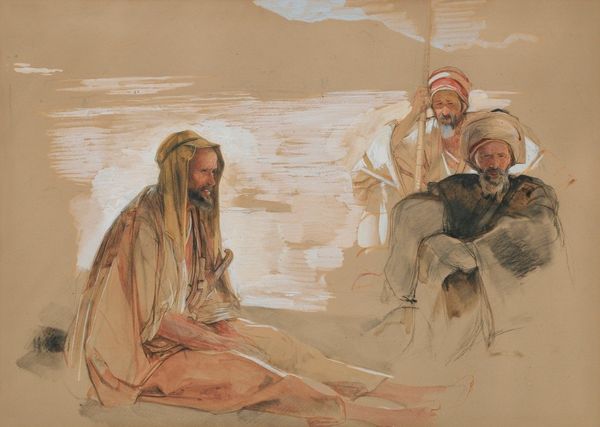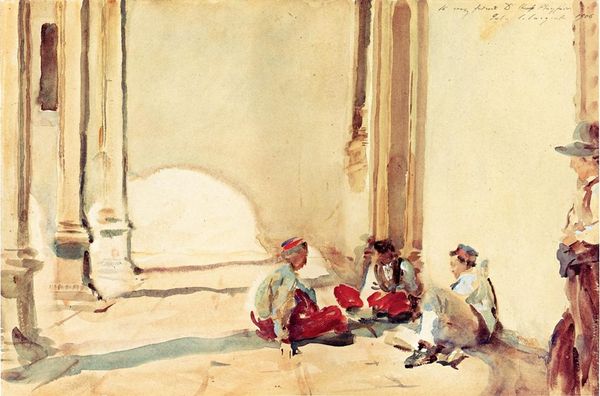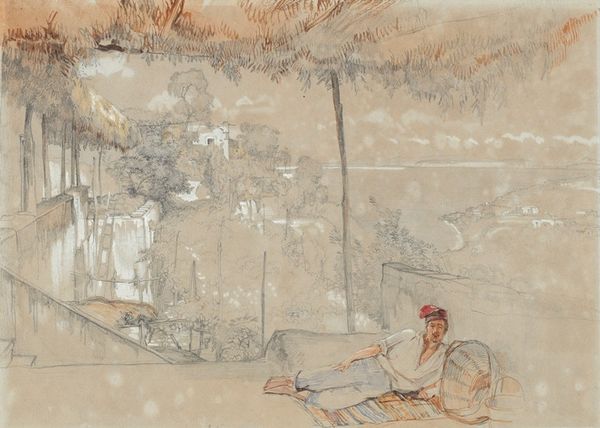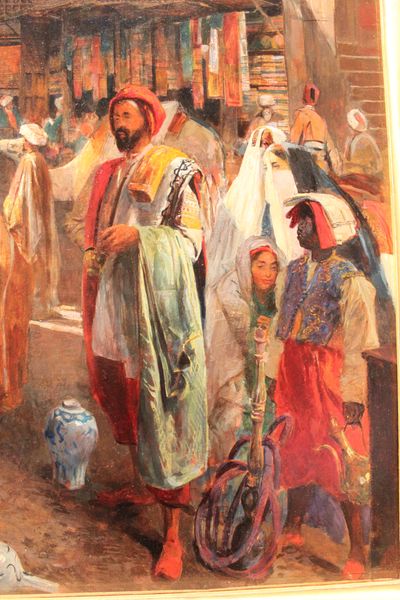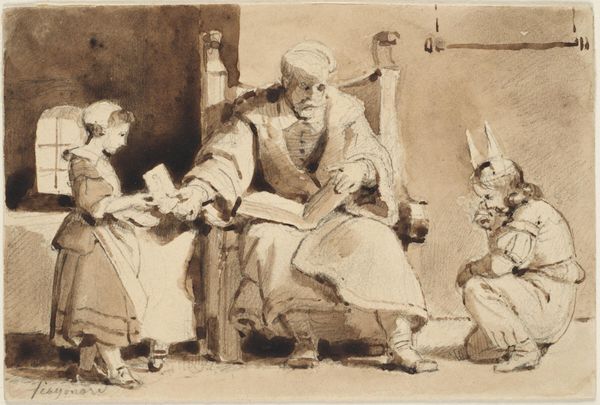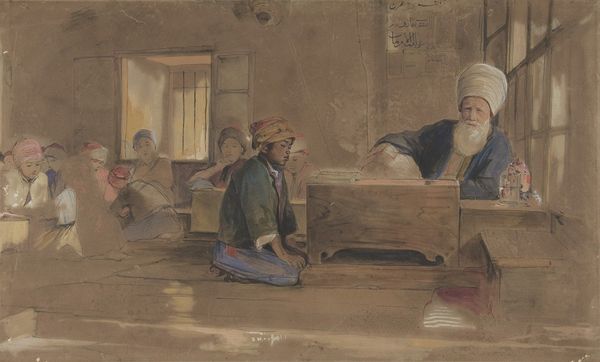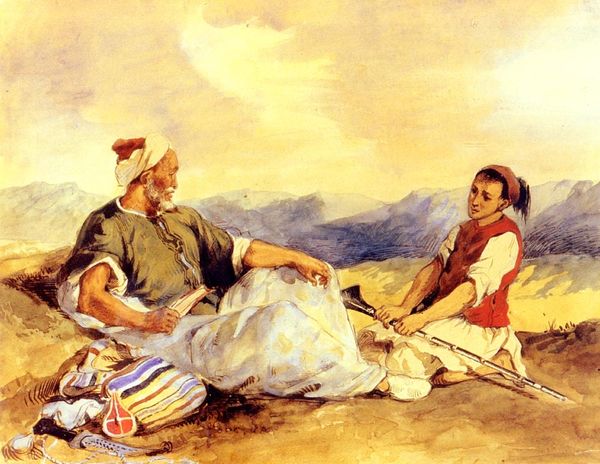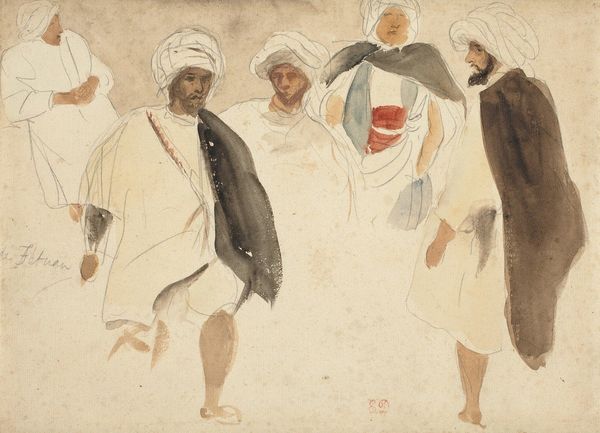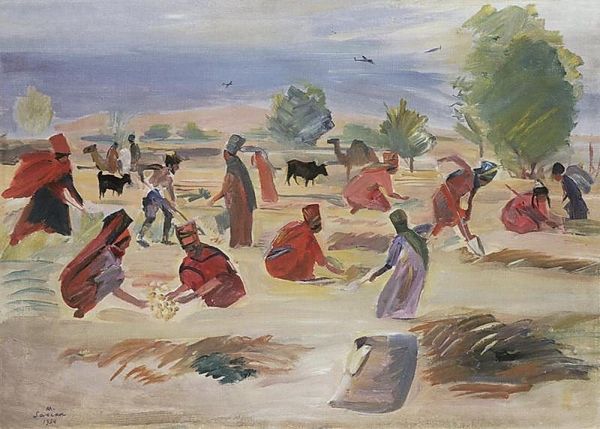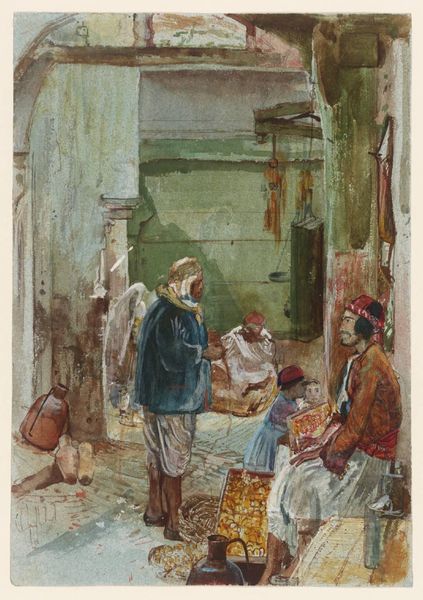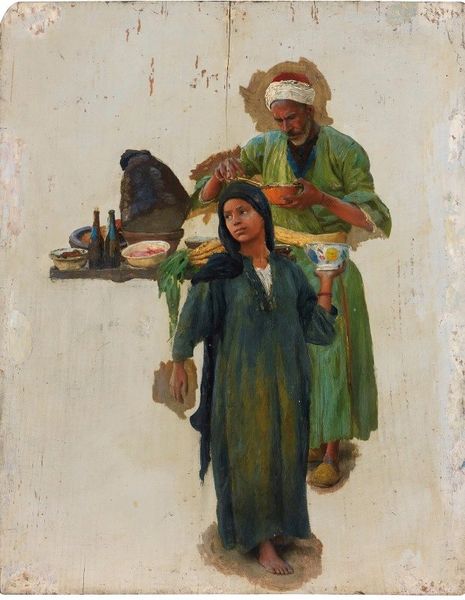
painting, watercolor
#
figurative
#
painting
#
landscape
#
oil painting
#
watercolor
#
orientalism
#
watercolour illustration
#
genre-painting
#
watercolor
#
realism
Copyright: Public Domain: Artvee
Curator: Upon first glance, I'm drawn to the intimate, almost pensive atmosphere. There's a stillness in this watercolor. Editor: Precisely. We are viewing Jacek Malczewski's "Genre scene from Asia Minor," completed in 1884. Malczewski was profoundly interested in how Polish identity was being constructed against the backdrop of Imperial power, which explains why he adopted an orientalist style, particularly during his travels. Curator: The figures are grouped informally, the composition loose. Yet, there's a sophisticated color palette, very subdued but harmonious. Look at the interplay of the reddish-browns against the faded blues. It really does hold together. Editor: What's crucial here is the fascination European artists had with the "Orient." Genre painting served as a tool for portraying cultural difference and exerting symbolic control. These works helped construct and solidify Western views and often projected colonial fantasies onto foreign landscapes. Curator: I agree; this is what immediately strikes me here, but on the purely aesthetic level, I do appreciate Malczewski’s treatment of light. Note the way it filters through the foliage. He's not aiming for hyperrealism. He captures the scene's hazy quality instead. Editor: The clothing, turbans, and jugs act as signifiers for a certain way of life – and those items carried distinct connotations to the European viewers. This Orientalist lens helped cement power structures and differentiate "us" from "them" in the colonial narrative. Curator: Right. While formally, the brushwork, the transparency of watercolor, offers immediacy, it also invites contemplation. One sees the cultural weight. Editor: Exactly, so, it makes you wonder about the lives and realities of the individuals portrayed and challenges us to question the stories embedded within such idealized or romanticized depictions. Curator: I agree completely, by exploring the nuances and motivations behind these images, we can create a new perspective on this painting.
Comments
No comments
Be the first to comment and join the conversation on the ultimate creative platform.
